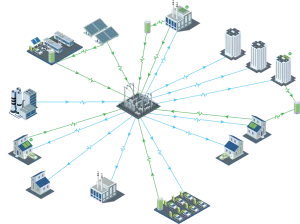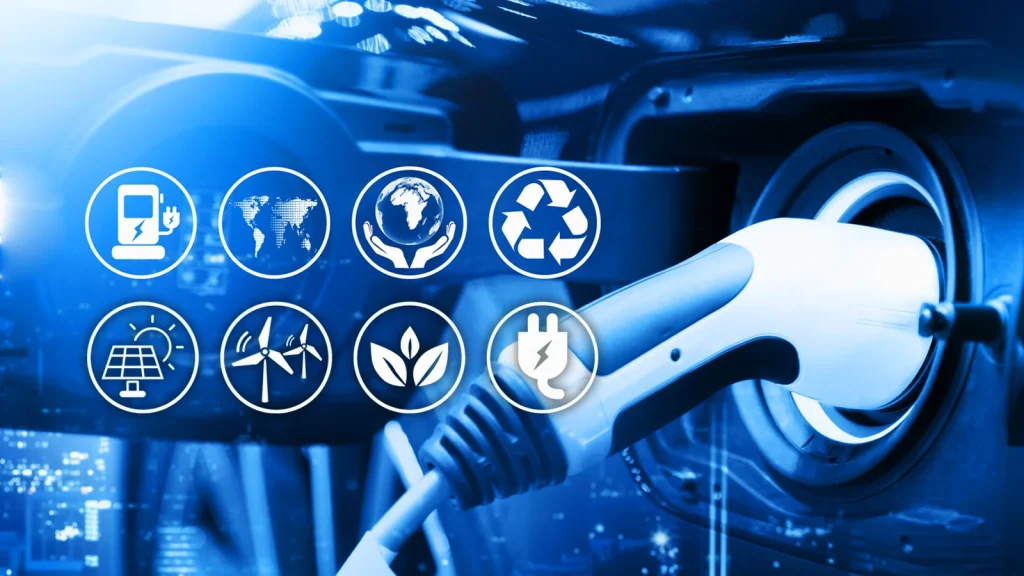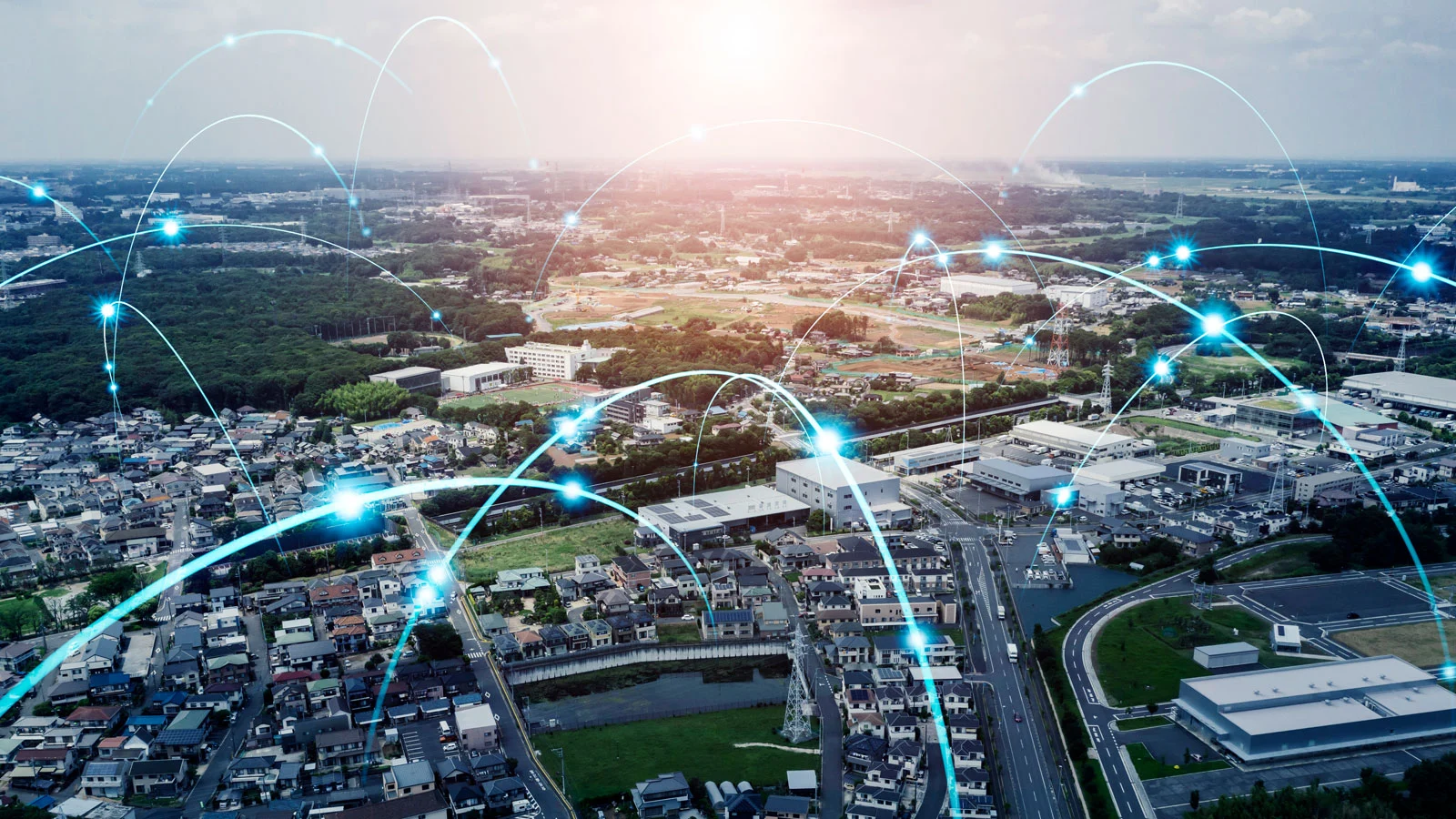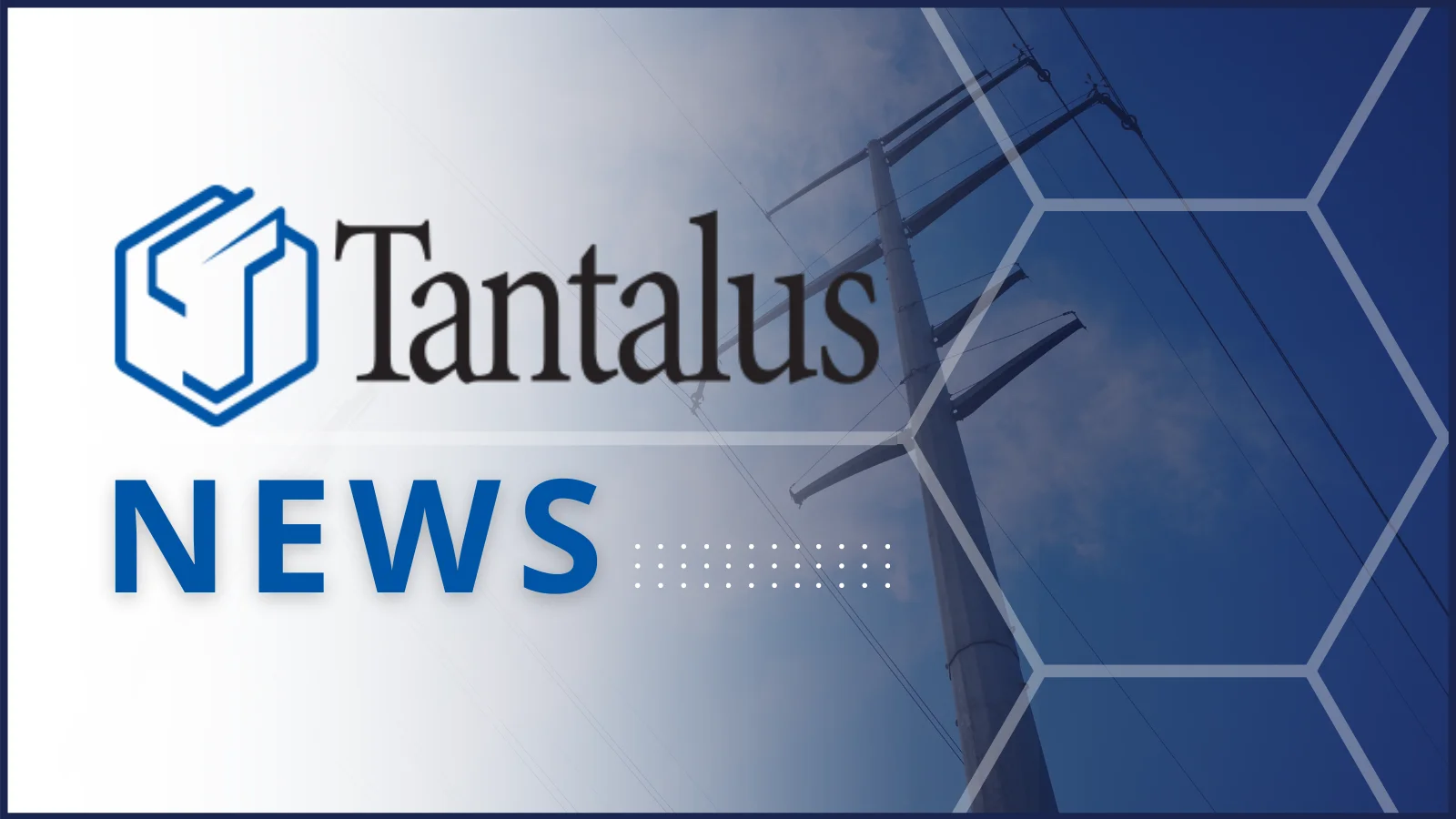by Peter Londa, CEO, Tantalus Systems (TSX: GRID)

It is a plain fact that the distribution grids utilities rely on today were never designed to handle the strains and pressures of 21st century life. The increasing frequency of severe weather events leads to extreme pressure on existing infrastructure that leads to extended power outages. Further, we are witnessing a meteoric adoption of new technologies, such as electric vehicles (“EVs”) and distributed energy resources (“DERs”), which are pushing the grid to its capacity and limit. The utility infrastructure we rely upon to access electricity is under substantial stress and is already putting people and businesses at risk.
This is why so many public power and electric cooperative utilities are focused on modernizing their distribution grids—to improve their reliability, both for today and for the future. Utilities realize that the distribution grid must be modernized to become truly sustainable.
And that’s exactly what Tantalus is helping utilities accomplish.
The Macro Trends: Immediate Challenges That Are Impacting Utilities
Public power and electric cooperative utilities are dealing with forces far beyond their control. Increasing extreme weather events—such as wildfires, hurricanes, tornados, blizzards and floods—are putting stress on the components of the nation’s electrical grid. Winter Storm Uri knocked out power generation across nearly all of Texas in early 2021. As generation came to a grinding halt, distribution grids had limited automation to control the amount of electricity being delivered to homes and businesses, thereby creating a massive imbalance between the supply and demand of power. This brutal cold snap lingered for five days leaving nearly 4.5 million Texans with no power. An estimated $295 billion in structural damage occurred and more than 150 people died from hypothermia and carbon monoxide poisoning as utilities across Texas worked tirelessly to get the power back up and running.
It’s not just Texas. Electric distribution grids across the entire United States struggle to deliver reliable power during extreme weather events. Virginia was devastated by a winter storm in January 2022 that knocked out power to more than 400,000 customers, forcing many to take to the roads to seek shelter with heat and power only to get stranded on I-95. North America incurred an astonishing $1.04 trillion in damages from climate events between 2001-2021, which translated into the greatest economic loss across any region in the world. In 2021 alone, there were 20 weather events that each cost more than $1 billion, totalling $145 billion and killing almost 700 people.
Mother Nature is not the only challenge testing the grid. The everyday activities of energy consumers are rapidly changing and in ways hardly anticipated a decade ago. Today, people expect constant connectivity through a multitude of electric devices that are available at their fingertips. Our society is creating a demand for energy at home and at work that is exponentially greater than any previous generation. Simultaneously, there is a greater awareness of climate change and the need for increased energy efficiency. To address their climate concerns, many consumers and businesses are adopting new technologies such as EVs and a variety of DERs, including rooftop solar panels, battery walls, storage and microgrids.
The adoption of these new technologies is not just hype or hyperbole. In fact, more than 5.4 GW of solar PV capacity was installed in the U.S. during the third quarter of 2021, bringing the U.S. to more than 113.5 GW of total installed solar capacity — enough to power nearly 22 million homes. In the U.S. alone, more than 526,000 EVs were sold last year, with annual U.S. sales projected to exceed 3 million by 2027 and nearly 5 million by 2030. By 2030, one in four new cars sold globally will be battery-powered, reaching over 80 percent of vehicles sold by 2050. Electric vehicles are expected to account for almost 70 percent of the global car parc by 2050.
The increasing adoption of EVs will exponentially increase the amount of electricity required to power vehicles. In 2020, roughly 4.7 terawatt hours were attributed to electric vehicle charging in the United States. The electric vehicle-related energy demand is expected to increase to an estimated 107 terawatt hours by 2035 in the United States. Electrifying nearly all transportation could contribute to more than doubling the amount of electricity used in the U.S. by 2050.
The early adoption of EVs and the deployment of DERs are already stressing the grid by directly changing the load profile utilities manage – both in terms of the amount of electricity consumers require at various locations and at various times of the day and by creating a multi-directional flow of power resulting from the discharging of electricity back into the grid from these devices. The changes in the amount of power being consumed and the flow of power feeding back up power lines from the very edge of the grid is not something existing distribution grids were designed to handle. Through it all, consumers expect utilities to support these new technologies, maintain reliability, and keep costs under control.
The Inflection Point: Electrification and Decarbonization
In short, we are witnessing the collision of two market mandates: the Electrification of Everything and the Decarbonization of Everything. People expect reliable power to enable their increasing technology-driven lifestyles, and they also want to see power provided in a way that reduces carbon emissions. But it’s a stark reality that you cannot electrify everything and decarbonize everything without upgrading our aging electric grid.
The Solution: Modernize and Digitize the Grid
Utilities need to come through for their communities every day, near-term and long-term. There is no way to do that sustainably for the long haul with the outdated grids many are working with today. Utilities just don’t have the command and control they need to manage everything amidst all this change. And that’s why we need to solve the underlying problem for utilities— by modernizing their existing distribution grids.
The electric distribution grid we have today was designed to support a one-way flow of power, moving from central sources of power generation through distribution grids that deliver power to customers at homes and businesses. While some utilities are working to modernize their grids, the overall grid has not changed all that much over the decades. Utilizing this grid for our modern needs of DERs and EVs is like trying to empower mobile communications with Morse code. The old analog, one-way grid doesn’t allow for command and control, because utilities have very limited contextual awareness to understand what’s unfolding at the very edge of the grid … unless they send somebody out in a truck to find out. That manual process is dangerous in the middle of a storm, expensive and time-consuming even in the best of weather conditions and leads to increased carbon emissions.
The first step towards modernizing is to digitize the grid by building a comprehensive network of intelligent, connected devices. By accessing, transporting, translating and analyzing data in a secure manner from multiple devices and platforms, utilities can gain command and control of every asset deployed from the substation to the meter – and from the meter directly to devices deployed at the home, premise or business. By digitizing the grid, utilities will have access to the necessary data to prioritize their upgrades and become proactive in embracing new sources of distributed power.

It is not realistic or cost-effective to simply rip and replace existing distribution grids, nor is it necessary. New smart grid platforms deployed by utilities to digitize their grids must be interoperable with existing devices and mission-critical applications, thereby extending the life of assets already in the field while also commencing the journey to modernize the grid. It is imperative that smart grid platforms provide this level of interoperability to enable utilities to provide services today with the necessary flexibility to also plan for the future.
Fundamentally, the grid we depend on today is breaking. It must be re-imagined as an integrated smart grid platform — a multi-directional network that’s digitized to provide total visibility across the distribution grid. That’s what will give utilities the necessary command and control to proactively prepare for the future. That’s what will help them achieve the operational, financial, environmental and community gains that their customers and communities expect. That’s what will make utilities truly sustainable to support their communities in the future.
The Future: Truly Sustainable Utilities
At Tantalus, we are partnering with a growing number of utilities to build this integrated smart grid—and we’re doing this now. It’s an inevitable and necessary evolution. The investment required to achieve this will be massive, and it will require a level of collaboration between the private sector and local and federal governments not seen since the national struggles of the mid-20th Century. But our viability as a competitive economy on the world stage—and the lifestyle and comfort that affords our citizens—is dependent on the determination to achieve this.
With the challenges facing their communities, an increasing number of public power and electric cooperative utilities are asking themselves some important questions.
What’s our vision for becoming a truly sustainable utility?
What are the financial and operational benefits of digitizing the grid?
Are we prepared to deliver the necessary power to enable the future of transportation?
Is our grid prepared to utilize distributed sources of generation to offset increases in the amount of power that needs to be delivered within our system?
What’s the cost to our community if we don’t modernize our grid?
It’s time to transition from triage to transformation. It’s time to make modernization our top shared priority. It’s time to ensure our grid—the infrastructure upon which all other industries rely—is up to the challenges of EVs, DERs, and extreme weather.
Future generations will thank us for it.



